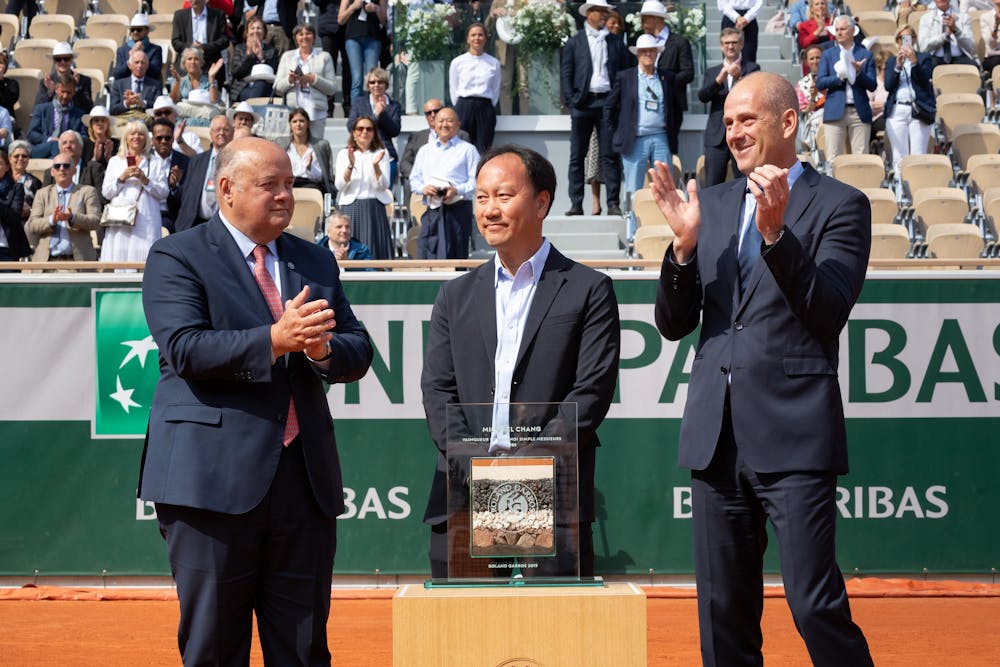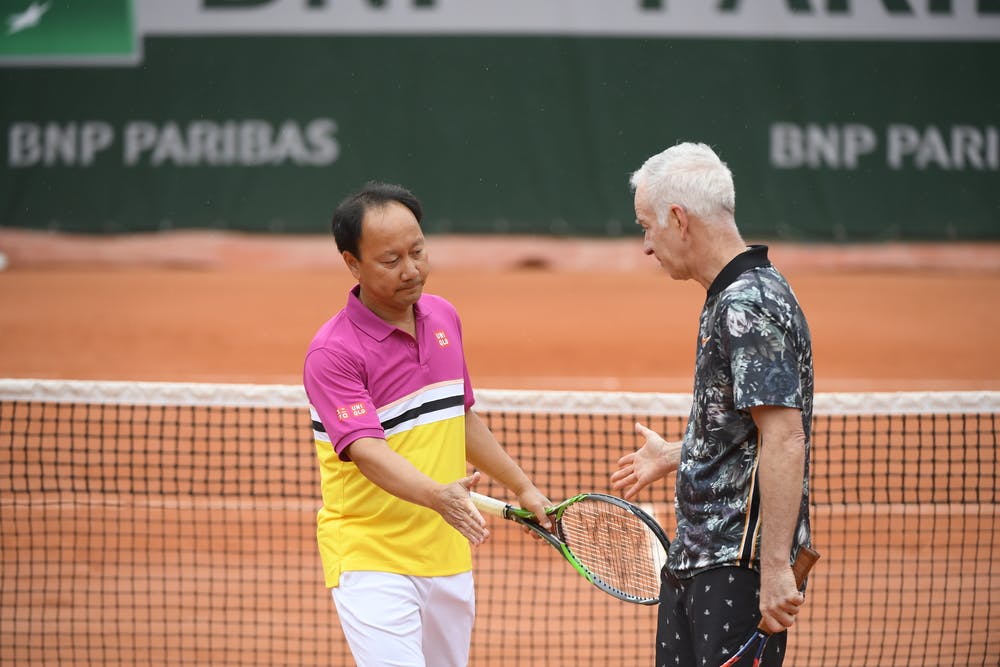As a 16-year-old in 1988, Michael Chang reached the third round at Roland-Garros but was well-beaten by John McEnroe. But when he arrived in Paris a year later, he was confident of a good run. Thirty years after his famous victory, Chang tells rolandgarros.com how it all happened.
RG 1989: Michael Chang’s path to history
Michael Chang remembers his 1989 run to the Roland-Garros title.

“I think ‘88 was a great experience for me,” Chang said. “Obviously, I had a lot of nerves in playing John, it was the first time I’d played against a big-name player, somebody I’d watc'hed play on TV for so many years. But by the time ‘89 came round, I’d played against quite a few of the top players so it wasn’t a big deal for me against them anymore.
"It certainly gave me some confidence going into the '89 French. Obviously, I didn’t go in with the confidence I could win the tournament, but I went in there with confidence that I could do well and play some great tennis."

Round 1: Beat Eduard Masso (Belgium) 6-7, 6-3, 6-0, 6-3
Chang was shocked when Masso, a Belgian ranked No.146 who won just two Grand Slam matches in his career, won the first set in a tiebreak. But any nerves were soon overcome as Chang ripped through the next three sets to get his teeth into the tournament.
Round 2: Beat Pete Sampras (U.S.) 6-1, 6-1, 6-1
The 18-year-old Sampras was more than a year away from becoming a Grand Slam champion and far from the man who would go on to win 14 majors. On clay, he was at his most vulnerable, something Chang knew well from juniors. The match was as one-sided as it sounds.
“I knew Pete very well, partly also because we trained together for the French, both in ‘88 and ‘89. We knew each other’s games really, really well and I knew that Pete was still not comfortable on the clay.
And then of all the places, they end up putting us on Centre Court, which I think was a little bit intimidating for him. Within an hour and a half it was over. I felt bad. I’d known Pete for so long and we’d had such a lot of great matches in the juniors. I think the first time we played was when we were both eight years old. We go back a long, long way.”
Round 3: Beat Francisco Roig (Spain) 6-0, 7-5, 6-3
Francisco Roig is known these days for his work with Rafael Nadal but in 1989, the Spaniard was working his way up the lower rungs of the ATP Tour. Ranked 291, he qualified for the main draw and won two rounds to set up a clash with Chang. He was hammered in the first set but Chang had to work pretty hard from then on to finish him off in straight sets.
Round 4: Beat Ivan Lendl (Czechoslovakia) 4-6, 4-6, 6-3, 6-3, 6-3
As the world No.1 and a three-time champion in Paris, Lendl was a big favourite to end Chang’s run and there was no hint of a shock as he took the first two sets.
The match was charged with emotion, though, coming the day after the Tiananmen Square massacre in Beijing, when government troops opened fire on pro-democracy protestors. The rallies were brutal and Chang, struggling with cramps, stood up at the changeovers for fear he may seize up entirely.
In the fourth set, he produced one of the most famous moments in Roland-Garros history when he hit an underarm serve and in the fifth set, he was perilously close to pulling out before he somehow came through.
“I’d beaten Lendl about a month before,” Chang said. “The underarm serve was just instinctive. But in the fifth set, at 2-1, I actually started to walk towards the chair umpire (to retire) but then I had an incredible conviction of heart and thought: ‘What are you doing?’
"It was almost like God was saying, 'You can’t quit now, if you quit now, every time you’re under the situation, you’re going to quit again'. All of a sudden I started going for my shots and points started turning into games and games started turning into more games. Before I knew it, somehow or other I was able to win that match.”
Quarter-finals: Beat Ronald Agenor (Haiti) 6-4, 2-6, 6-4, 7-6
Agenor had beaten Sergi Bruguera, the Spaniard who would go on to win the title in 1993 and 1994, in the previous round. But the effort of that five-set victory left him with little in the tank against Chang. It still required four sets, including a tiebreak in the fourth, but the result was never really in doubt.
Semi-finals: Beat Andrei Chesnokov (Russia) 6-1, 5-7, 7-6, 7-5
Chesnokov had taken out the three-time winner, and defending champion, Mats Wilander in the last eight. Chang led by a set and 3-0 but Chesnokov, who loved clay, hit back. The two men then engaged in a battle every bit as gruelling as Chang’s win over Lendl.
Chesnokov led by a break in the third and fourth sets but the teenage Chang hit back each time to clinch the match. By the time they were done, after four hours, five minutes, Chang needed several hours of treatment for exhaustion and leg cramps.
Final: Beat Stefan Edberg (Sweden) 6-1, 3-6, 4-6, 6-4, 6-2
Edberg had beaten Boris Becker in a five-set classic in the semis and when he recovered from the loss of the opener to win sets two and three, he looked favourite, his serve and volley game working beautifully. But Chang dug deep and after scraping through the fourth, he was the stronger in the fifth and became the youngest man ever to win a Grand Slam, a record he still holds today.
“I’d played Stefan already a few times, so I knew what kind of tough opponent he was,” Chang said. “I got off to a great start but he played too good in the second and third sets. I got one break point in the fourth and I think I saved like 10 or 11 break points in that fourth set, that was a huge difference. Then in the fifth set he got tired. I have a lot of great memories. It’s a special place for me.”
 ROLAND-GARROS
18 May - 7 June 2026
ROLAND-GARROS
18 May - 7 June 2026

